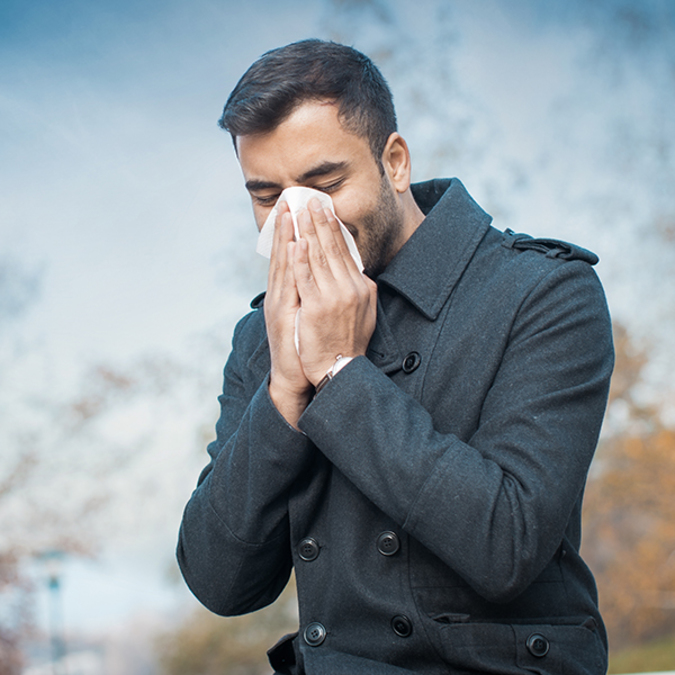The leaves are changing, the temperature is beginning to lower and noses everywhere are starting to itch and drip. That's right, it's fall allergy season.
Allergen sources
In the Cincinnati area, there are two major sources of allergens: weeds - most notoriously ragweed - and mold. Ragweed flowers start to mature in August and release their pollen through mid to late October, posing a threat to anyone who ventures outside.
Meanwhile, mold can be found anywhere there are large amounts of fallen leaves and moist ground.
"Mold counts go up and down throughout the year, but they get really high in the fall when the leaves come down," explains Dr. Kelly Allred Metz, an allergist with TriHealth.
Unfortunately for allergy sufferers who love outdoor autumn activities, corn fields, hay mazes and pumpkin patches are especially concentrated sources of mold spores.
You'll be insulated from allergens for the most part if you stay inside because air conditioners filter out about 95 percent of allergens, Dr. Metz says, but there are a few other things fall allergy sufferers can do to prevent their symptoms from ruining their enjoyment of autumn.

Allergy survival techniques
1. Check a pollen calendar
Depending on the weather and the time of year, certain pollen counts may be higher than others. Local news channels often broadcast pollen concentration counts that can help you understand what your risk of allergy symptoms will be for the day. You can also check out pollen calendars online.
2. Consider the time of day
Pollen counts increase in the morning to peak in the early afternoon and fall again overnight. Choosing to do outdoor exercise in the early morning or late evening is best for pollen allergic patients.
2. Change your clothes and shower after being outdoors
Pollen settles on your hair and clothing when you spend time outdoors. Changing and showering can rid you of those irritants when you come inside. Dr. Metz also suggests wiping down pets after they've been outside.
3. Distinguish between cold and allergy symptoms
It can be difficult, at first, to distinguish between a runny nose that stems from a cold and not an allergic reaction. However, Dr. Metz says there are ways to tell the difference.
"If it's caused by an allergen, it will last for weeks at a time," she says. "A cold will wrap up in 7 to 10 days. Allergies respond to antihistamines generally but a cold will not."
Allergy symptoms will also get worse when you're exposed to triggers (i.e., when you spend time outside) whereas cold symptoms will hold fairly constant.
4. Determine the source of your allergy symptoms
When you're stumped as to the source of your allergy symptoms, it's helpful to see a specialist, such as an allergist, who can perform an allergy skin test to determine what it is you're allergic to. Once you know where your symptoms are coming from, you can determine whether it's more important to avoid outdoor or indoor allergen sources.
5. Take an over-the-counter antihistamine
The best offense against fall allergies is a good defense. Metz explains that starting a daily regimen of non-prescription antihistamines and nasal sprays can serve as an effective treatment to allergens. However, if your symptoms are poorly managed by OTC drugs, an allergist may be able to suggest other methods for treating your allergies.
Visit a TriHealth location near you for a consultation with Dr. Metz or another of TriHealth's board-certified physicians.


